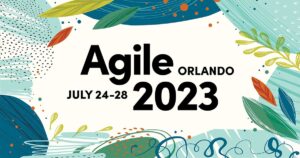Have you ever attended a training event where content didn’t exactly “line up”? Imagine listening to an instructor where they fly through lots of slides, and follow that up with some sort of game involving dice, paper airplanes, pennies, or spaghetti and marshmallows. When the instructor asks “Okay, do you understand it?” you give an enthusiastic thumbs up and head out of class. Then there is an exam. You see multiple choice questions with options like “A”,” B”, “C”, “D”, “A and B”, “A and C”, “B and C”, “All of the above”, “None of the above”. Your head starts to spin… You try to remember the concepts from the slides, but all you can remember is throwing planes at one another. Frustrating, isn’t it? This type of misalignment could exist in anything from a training course, to a workshop that you’ve designed, or even a meeting that you are facilitating. Learning experiences could be all of those types of discussions and then some!
In this session, you will learn about the different choices instructors, coaches, and facilitators make when building these types of learning experiences, and the impacts of those choices on their attendees and the event overall. By understanding the relationship between the knowledge to share, the instructional method used to convey the knowledge, and the assessment technique, participants in this session will gain practical knowledge about how to approach the design of their next learning experience to maximize student/attendee experience and retention.
Learning Outcomes:
- Identify (Recognize) the four different types of knowledge from Bloom’s Taxonomy for Educational Objectives
- Identify (Recognize) the six different categories of cognitive processes from Bloom’s Taxonomy for Educational Objectives
- Classify (Categorize) examples of the four different types of knowledge from Bloom’s Taxonomy for Educational Objectives
- Exemplify (Illustrate) examples of instructional activities suited for Factual and Conceptual knowledge
- Identify (Recognize) examples of misalignment and alignment of objectives, instruction, and assessment


